Occupy City Hall, also known as Abolition Park, was an occupation protest at City Hall in downtown Manhattan, at the peak of the George Floyd Uprising during June 2020. In addition to the primary goal of persuading the City Council to cut NYPD’s $11 billion effective budget, and redirecting funds to community resources, the park became a community gathering space for activists and organizers, with resources and information for creating a safe and healthy society without the need for police and prisons, aka police and prison abolition.
Things were unfolding faster than you could keep up with. There were a lot of rumblings on whether or not people wanted to be named or identified, as activists have time and again been targeted by the state, so I decided to leave names out.
This is Part 2, visit Part 1 if you haven’t already.
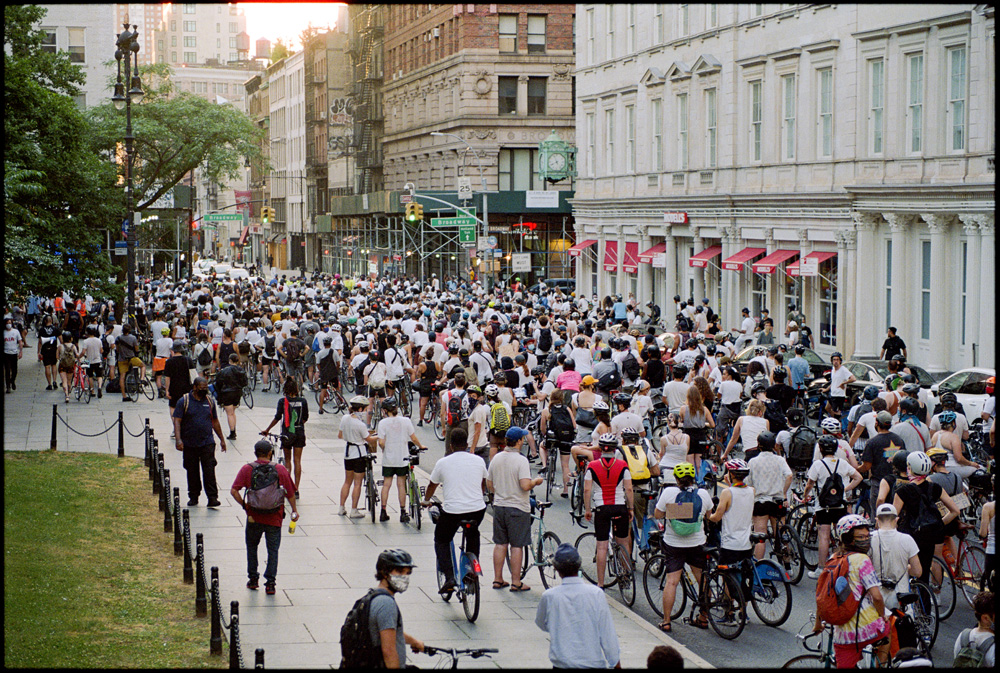
The bike marches were massive like other marches. They would also pass by and get water and snacks.
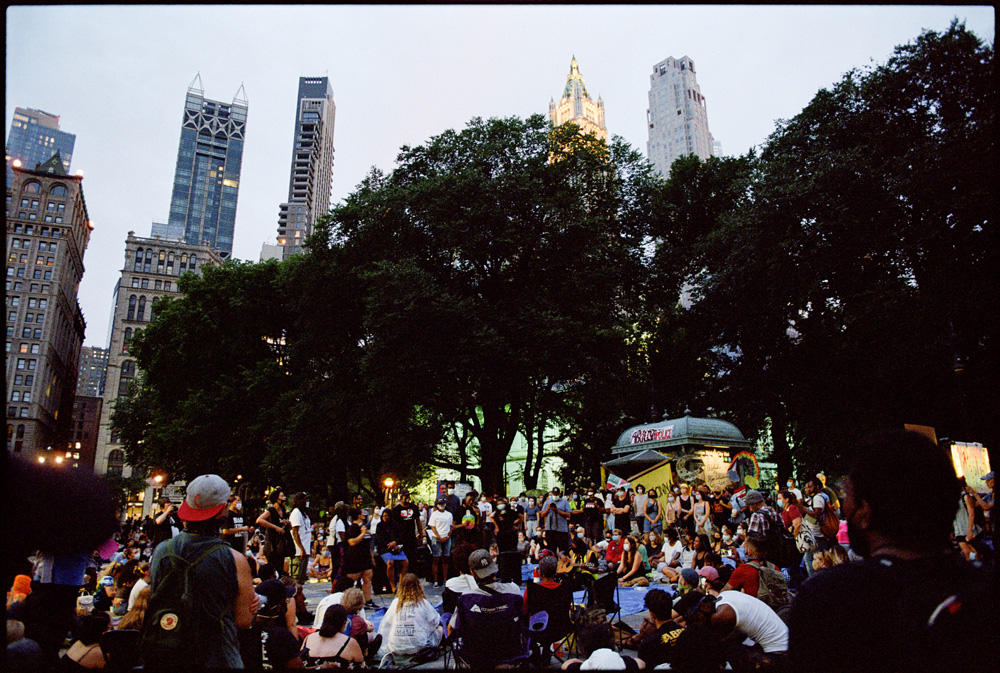
Community meeting at dusk.
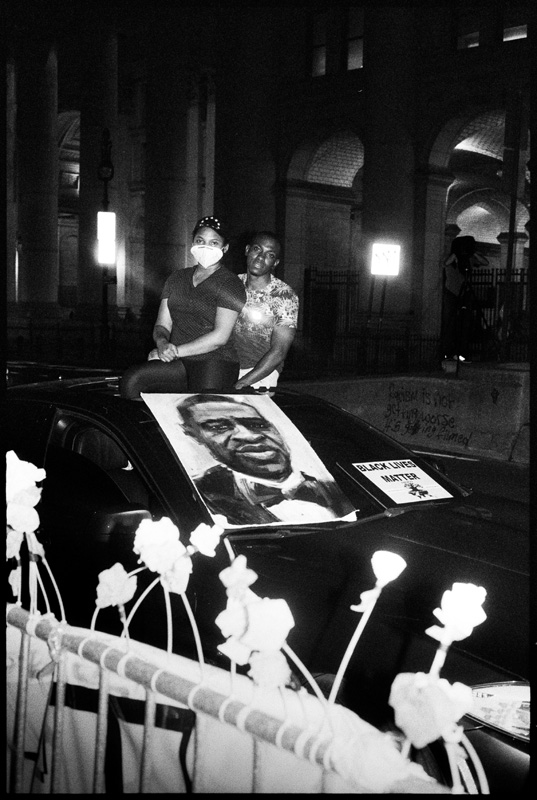
A couple sits on top of their car on top of the sun roof, with a George Floyd portrait on the windshield, with flowers mounted on a barrier.
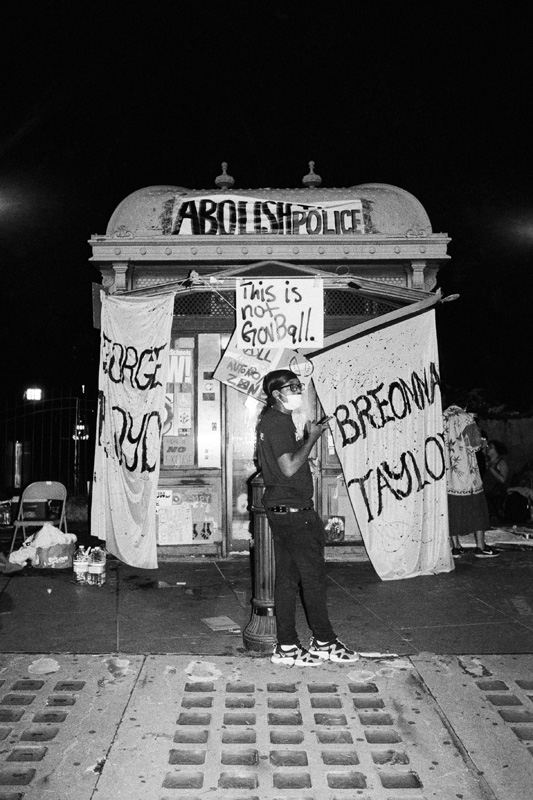
The subway entrance elevator to the City Hall station had gone through various redecorations. One sign read, “This is not Gov Ball”, as a reminder that, while there was satisfaction and joy in the community coming together, it was still an active protest against government oppression, not just entertainment during a pandemic lockdown.
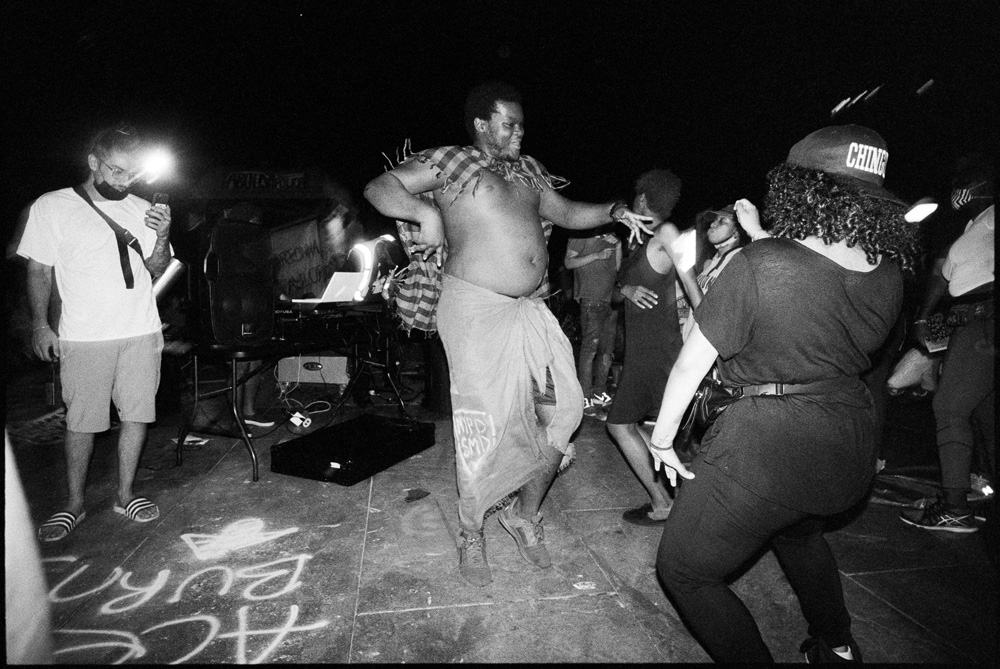
Especially after a long day of community work, classes, and constant threat from police, celebrating black joy was recognized as a radical form of protest in the face of white supremacy.
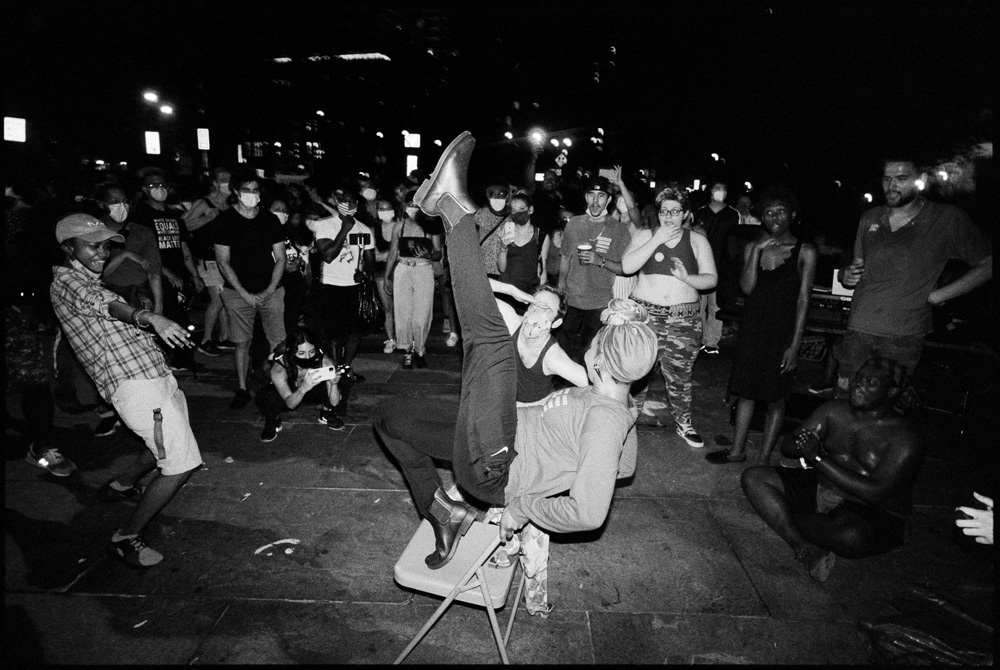
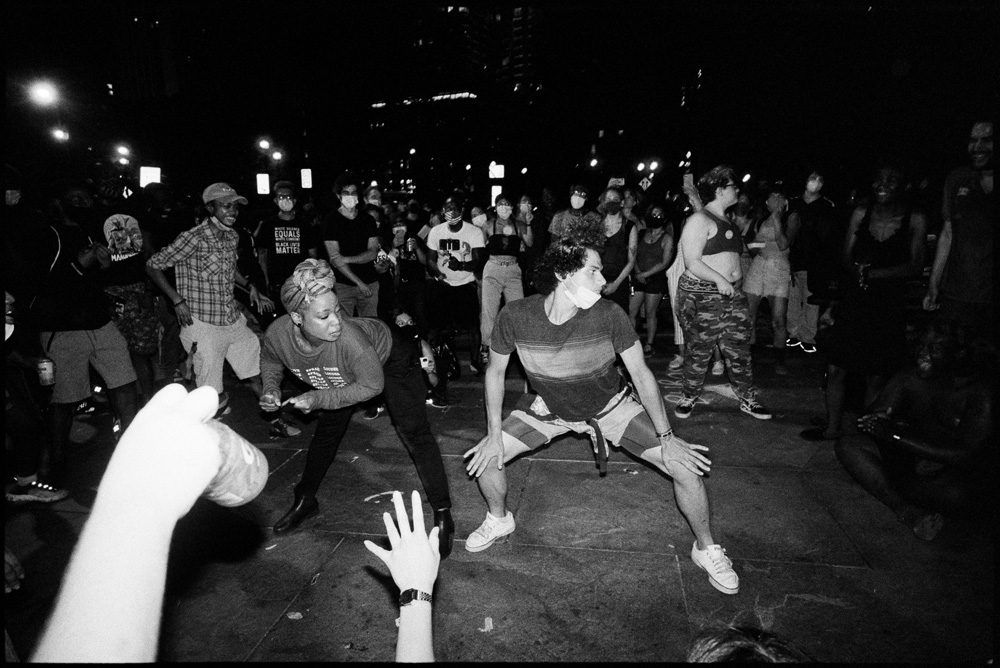
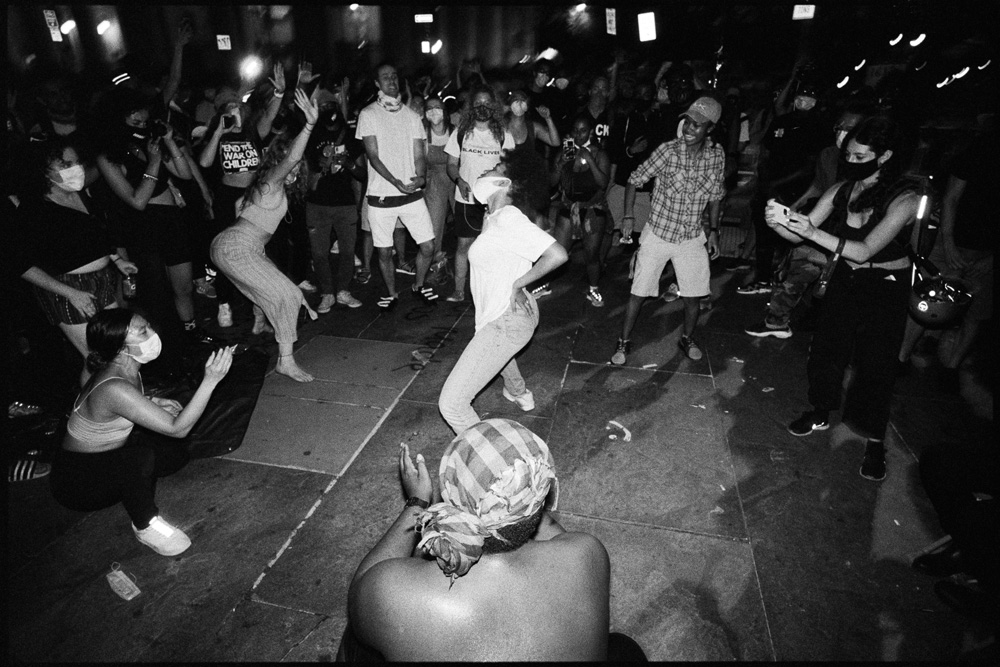
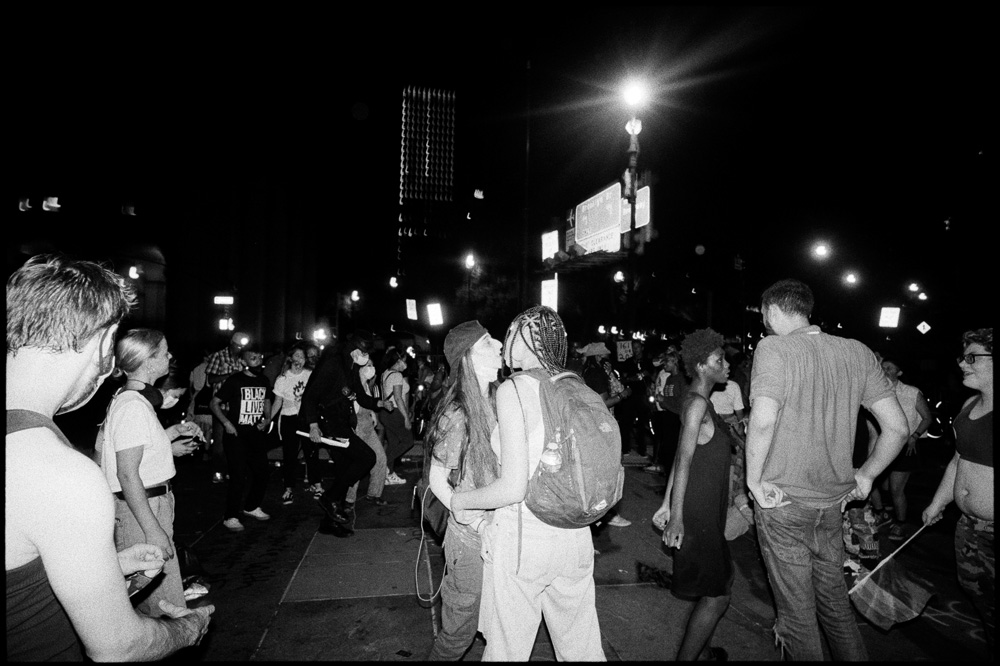
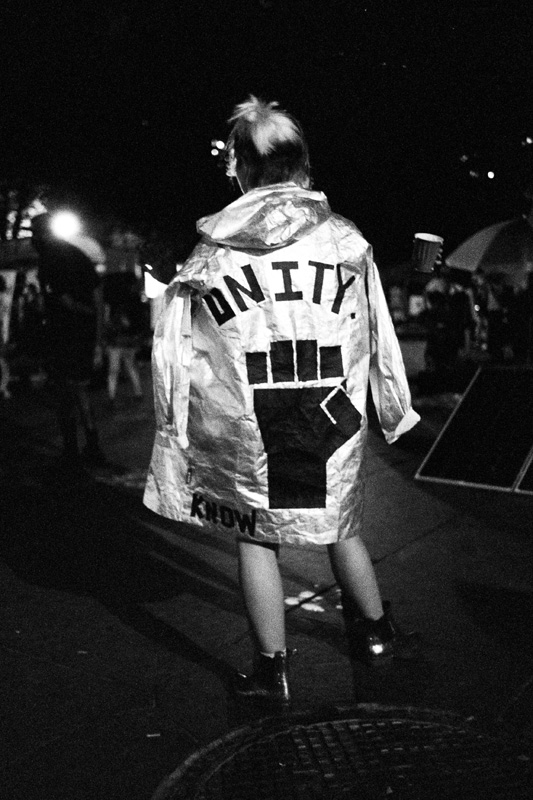
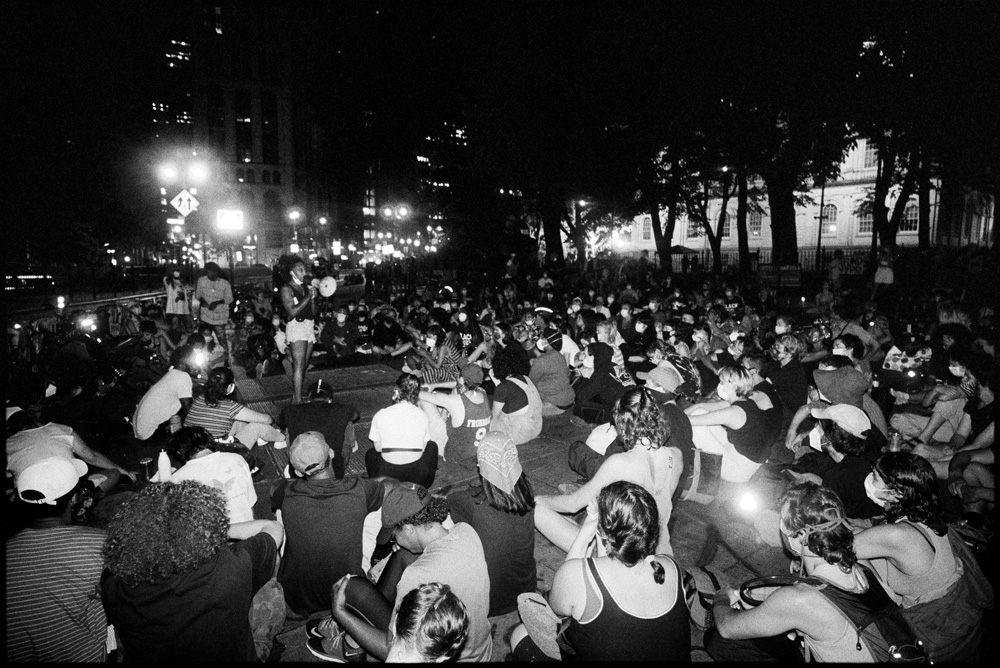
Various nights and mornings, police in riot gear would attempt to forcefully evict the occupation. The dedicated community would form a defense and sustain violent beatings. So in addition to gathering for speeches, there were community meetings and debriefings held. It’s always helpful to meditate, decompress, and process emotions after attacks.
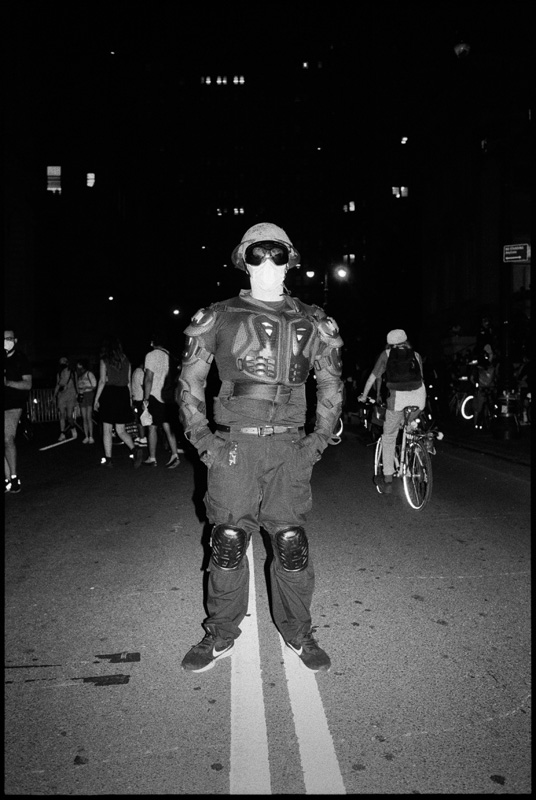
As police grew more violent, many protestors came prepared with helmets. This medic came with extra protective gear.
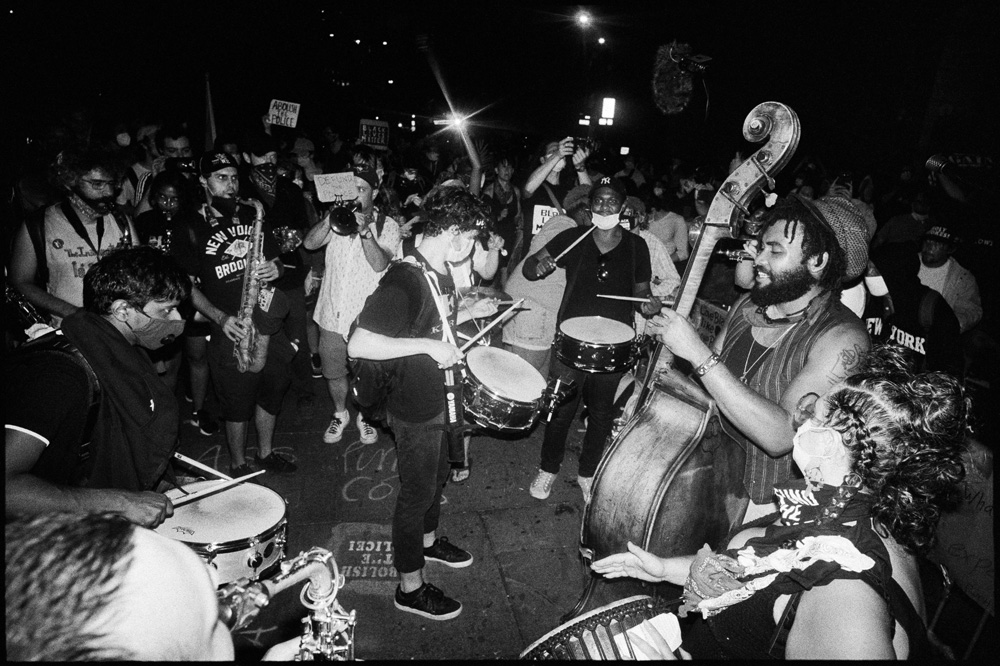
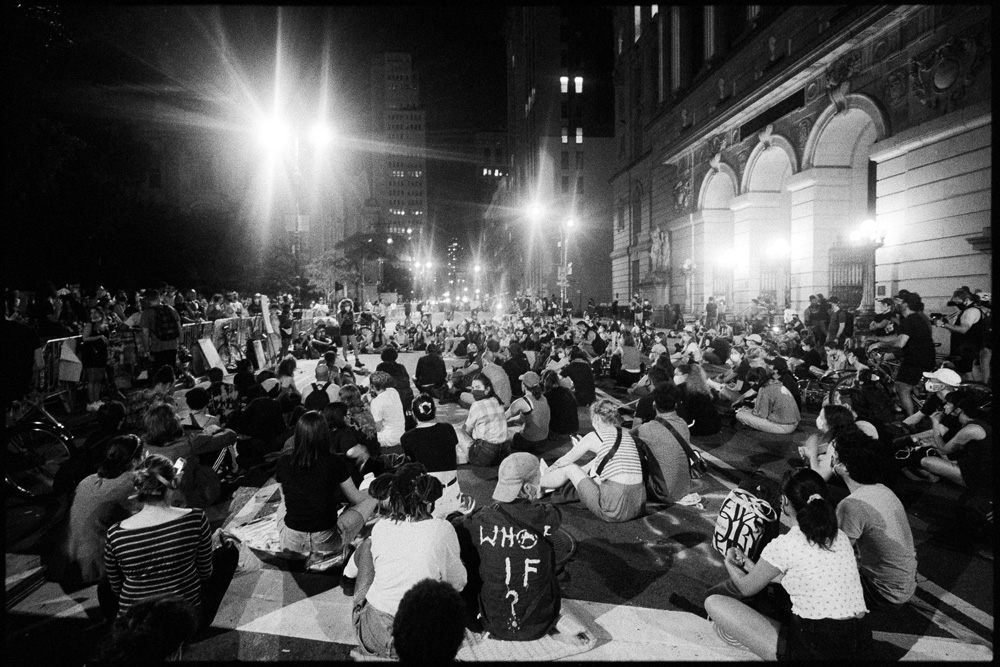
The occupation spread beyond the park and into street and intersection, blocking an exit ramp off the brooklyn Bridge. The police were not happy about blocking rush hour traffic, and came out to push occupiers back into the park. The next day the intersection was blocked and occupied again, followed by a 2nd morning of riot police confrontation.
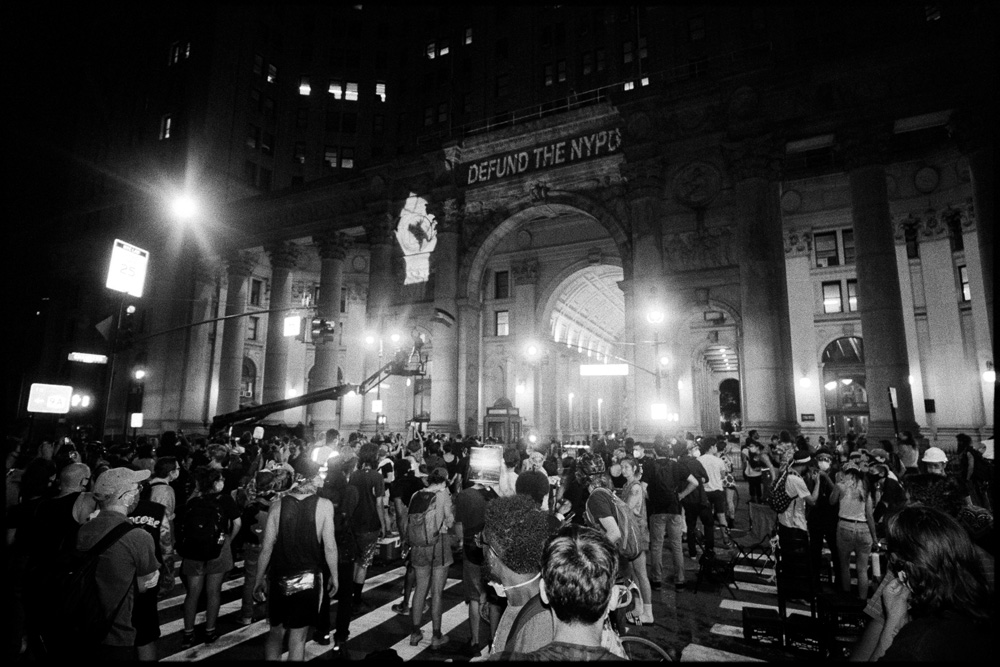
A protestor climbed one of the construction machines and waved a Palestinian flag. People were supportive but also concerned it would draw too much attention from police, especially after annexing the intersection which was a bold move and a lot of ground to protect.
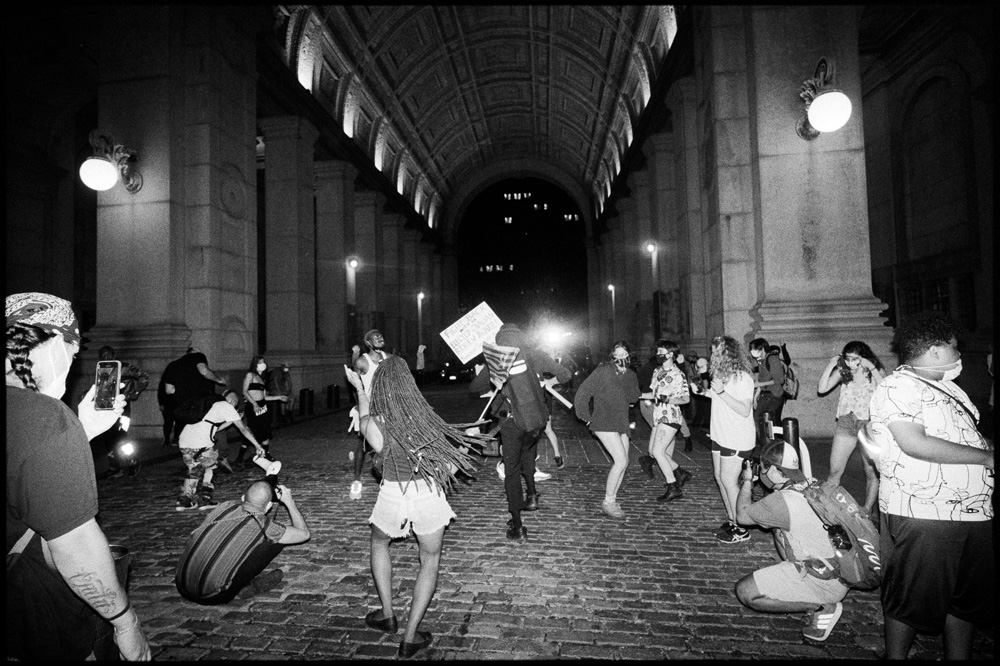
Whenever police were pushed back, there was always a little celebration.
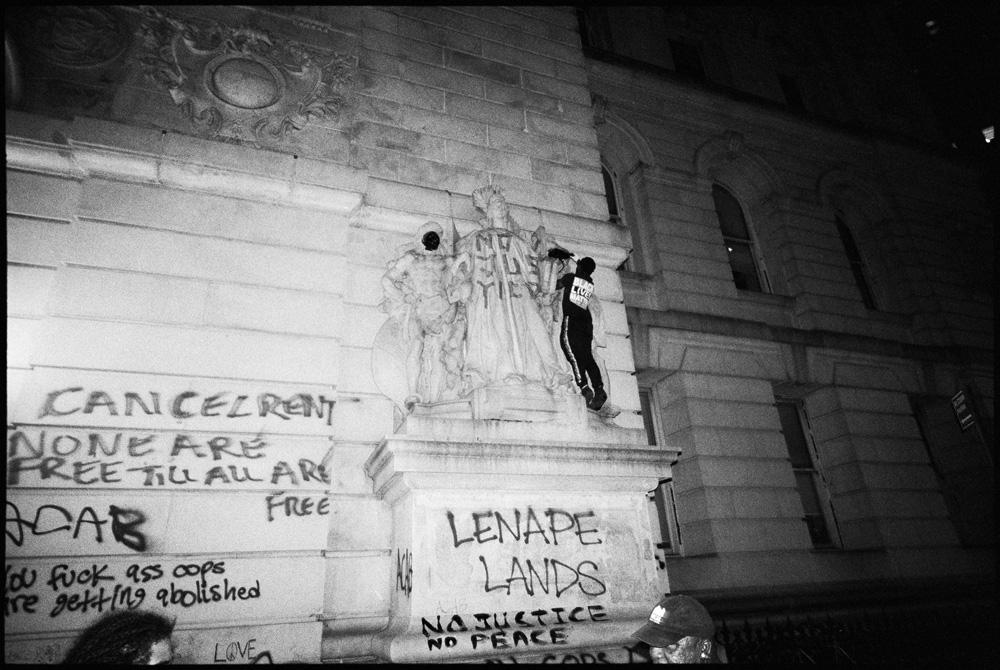
Art spread across the street and onto the statues on a courthouse building. Paintings read: CANCEL RENT, NONE ARE FREE UNTIL ALL ARE FREE, ACAB, You fuck ass cops are getting abolished, LENAPE LANDS, NO JUSTICE, NO PEACE.
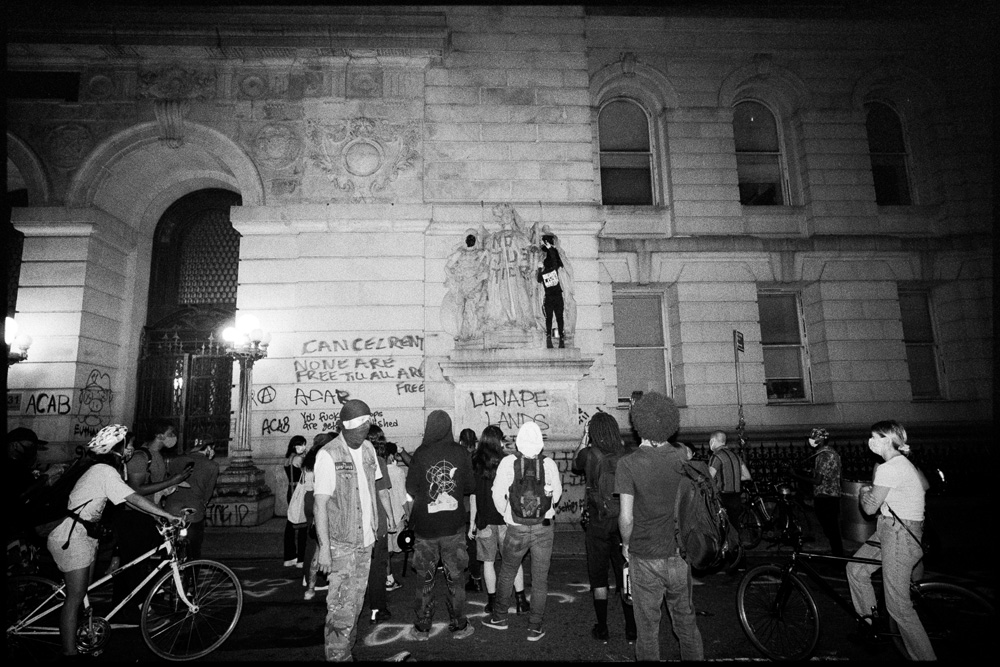
Onlookers both cheered and were concerned about retaliation by the city.
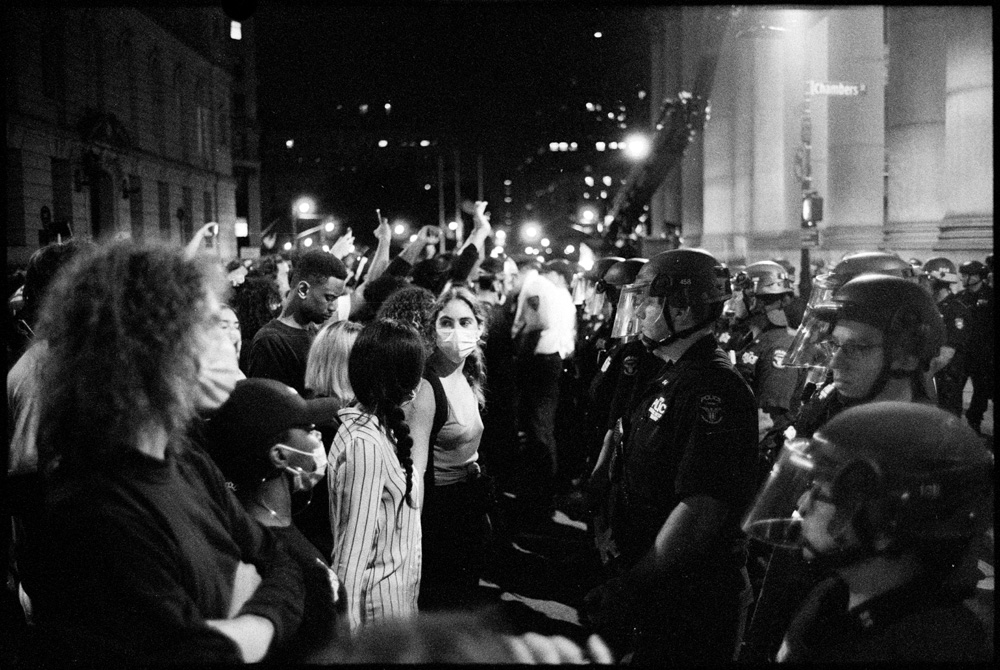
The more days the the protest went on, and the more space it took up, the more police presence and intimidation ramped up. Protesters got accustomed to lining up to defend the community.
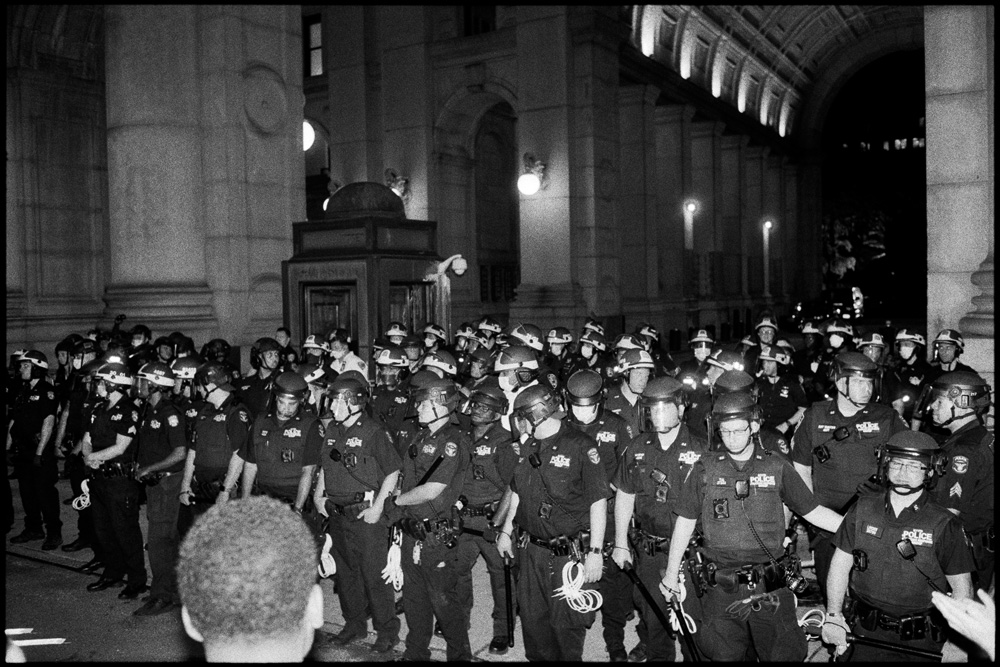
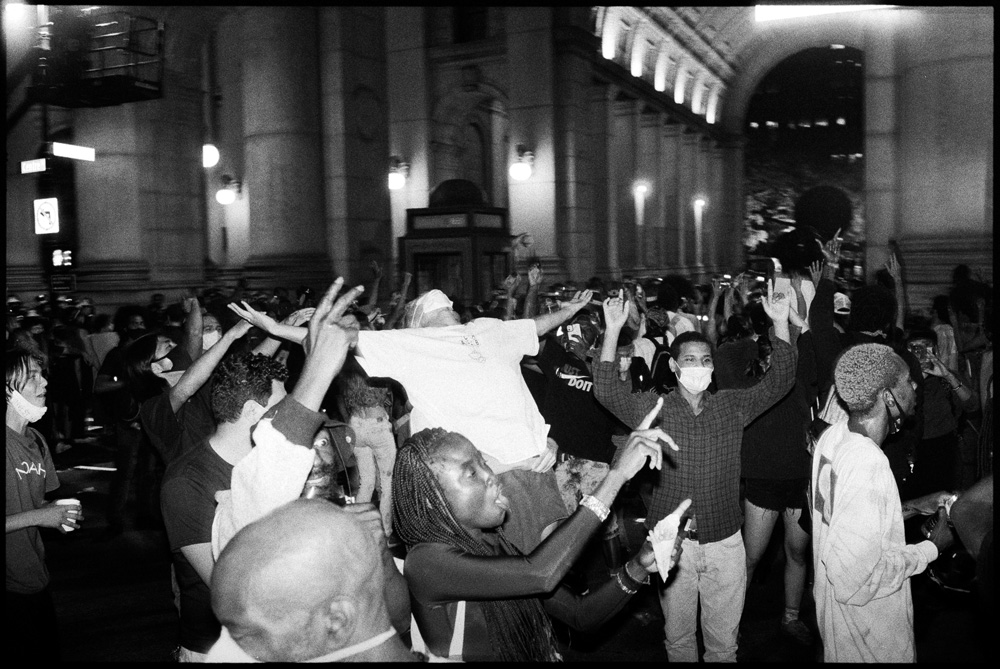
Another small celebration for pushing back the cops.
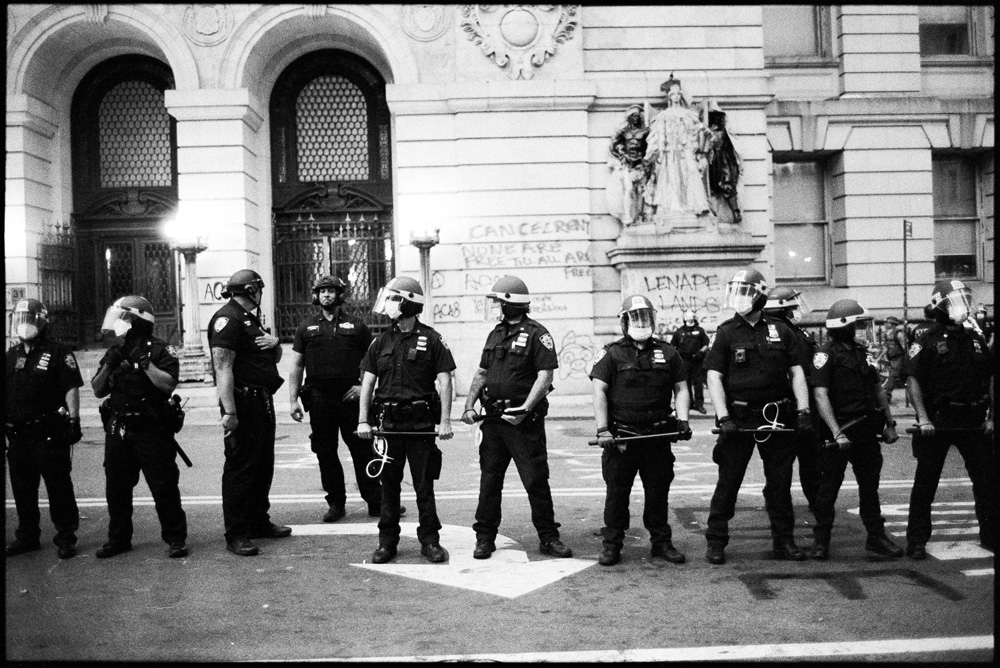
Eventually the police succeeded in clearing the streets by violently beating protestors back. The police attacked a few times, I didn’t feel safe photographing the beatings, especially without a helmet, and there were plenty of people documenting it with their phones and cameras.
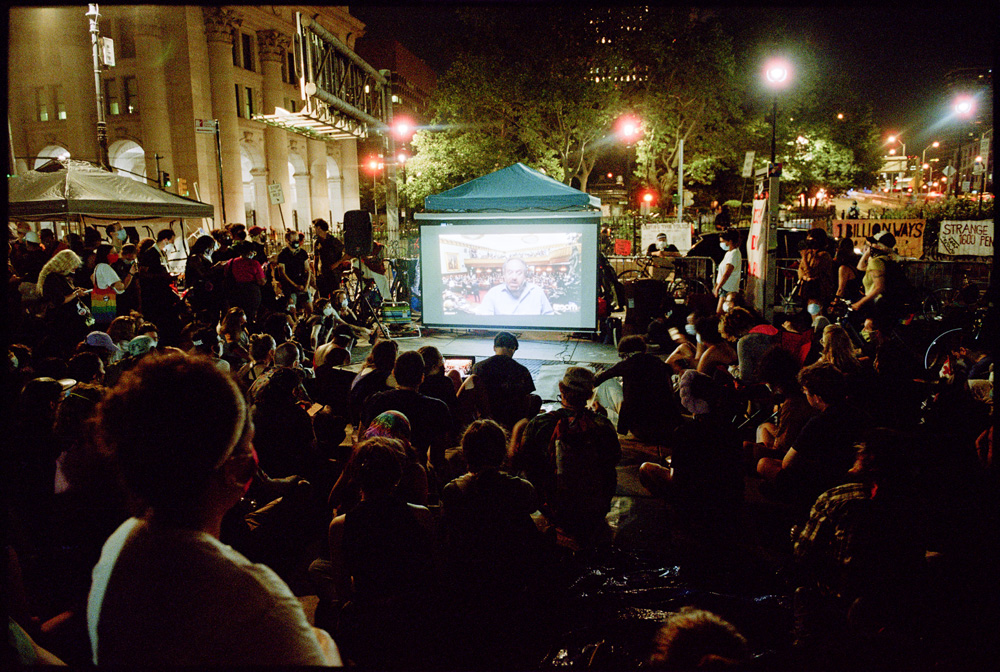
Eventually the city council’s budget vote came up and was live streamed. It was long process that was postponed throughout the day and extended until after midnight. The community gathered to watch together with cheers and boos for each vote, mostly boos.
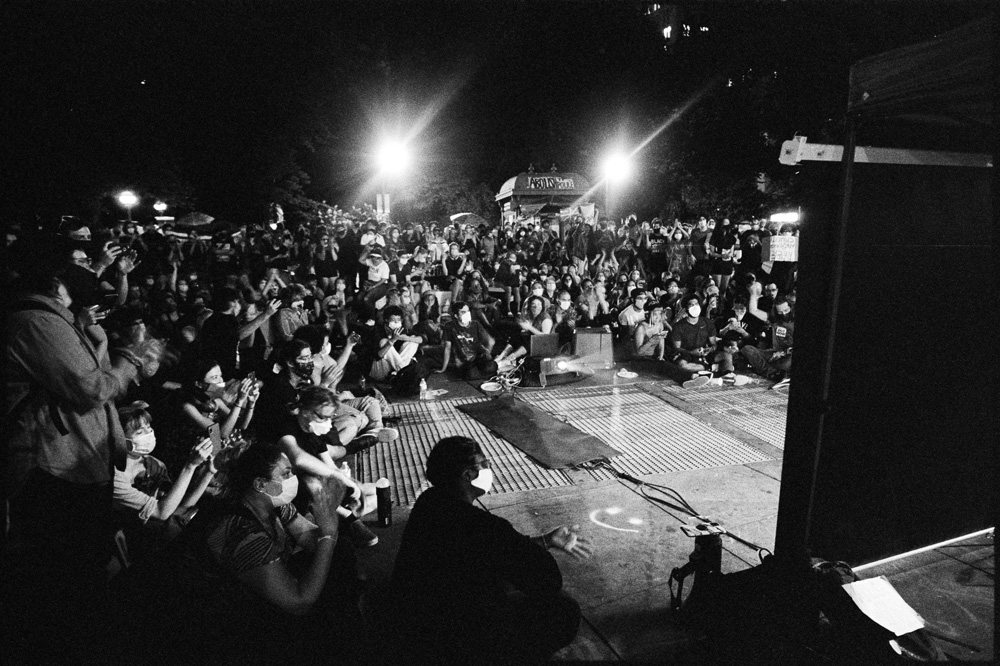
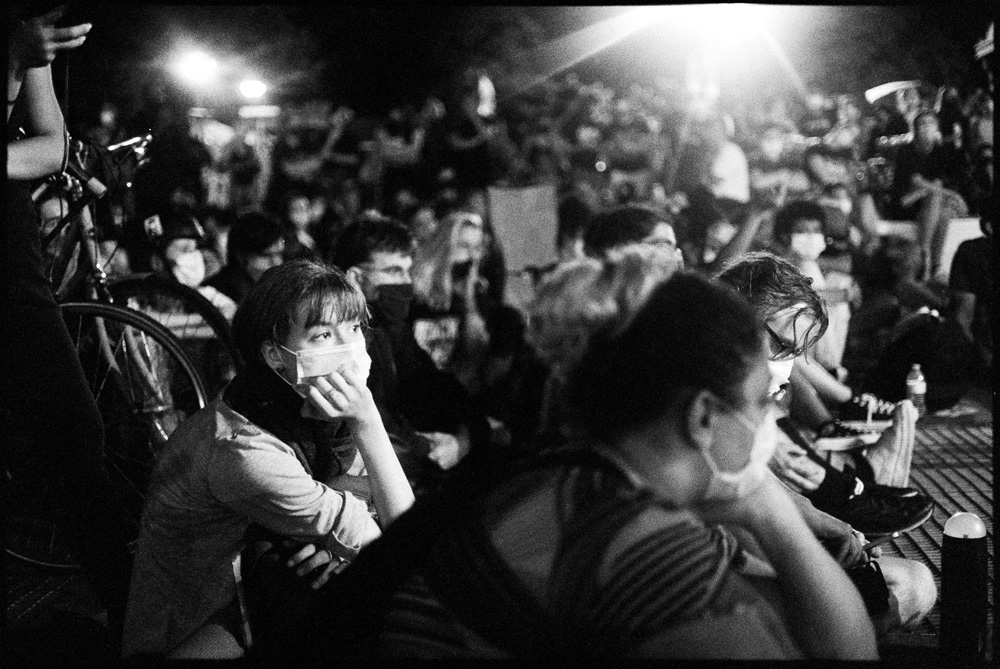
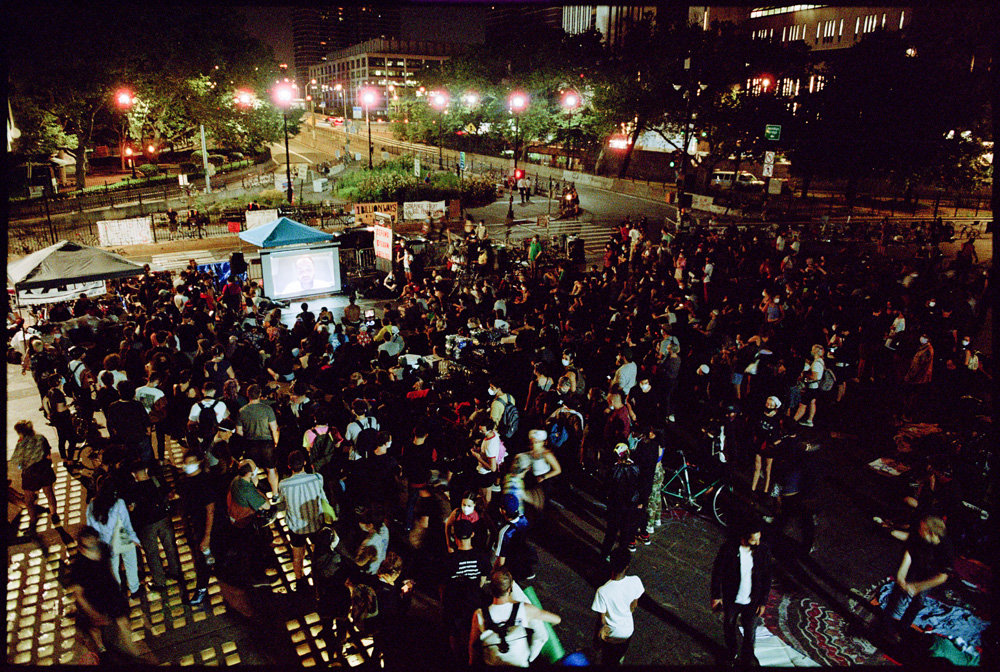
The budget passed to try and make it look like they were listening to the people, to look like they were shifting funding away from the NYPD and towards community resources, but in the end just shifted the budget to continue the same policing functions, without funding resources that would create public safety.
The safest communities don’t have the most police, they have the most resources. It is blatantly obvious that prioritizing education, opportunity, and healthy, fulfilling livelihoods, prevents crime, and keeps the public safe. But our governments never address the root causes of societal ailments.
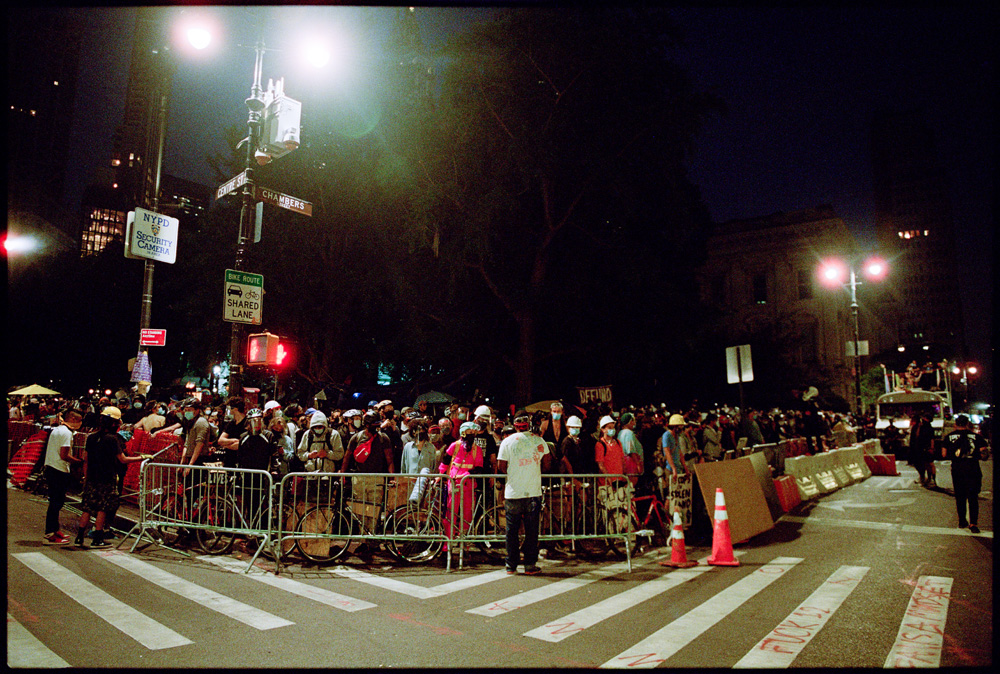
After the hearings, everyone went on guard to prepare for another police attack later at night, and in the early morning.
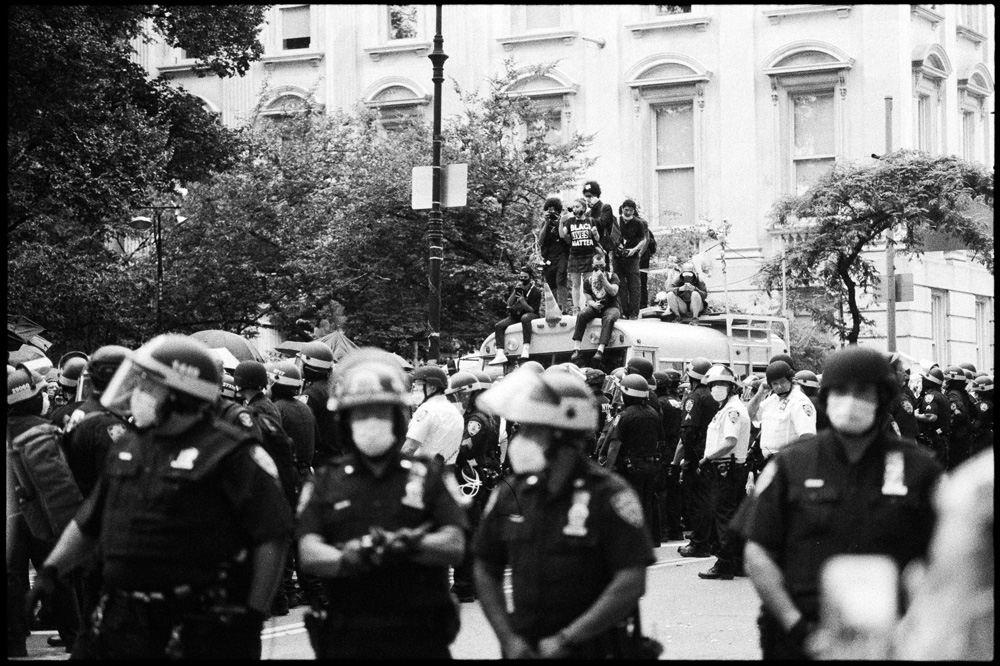
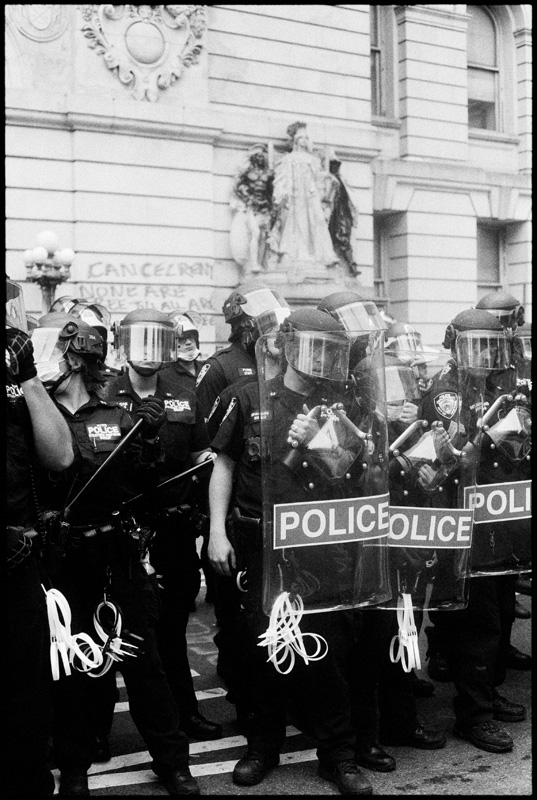
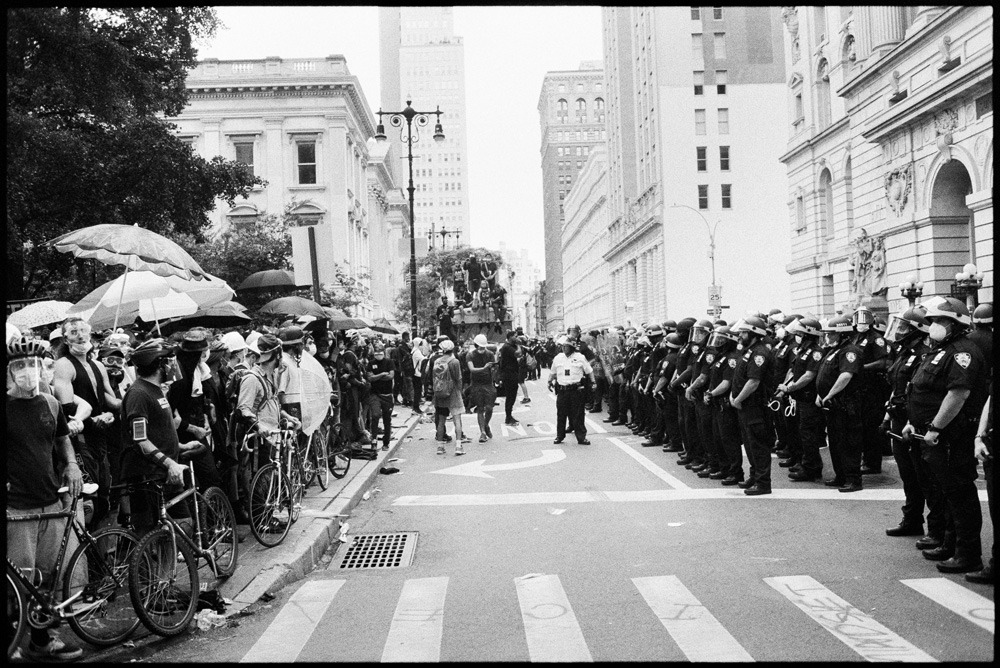
At this point, most of the barriers around the occupation, shown in prior photos, had been forcefully removed during an attack, which left people feeling very exposed and vulnerable, but they stood up to the next attack the best they could.
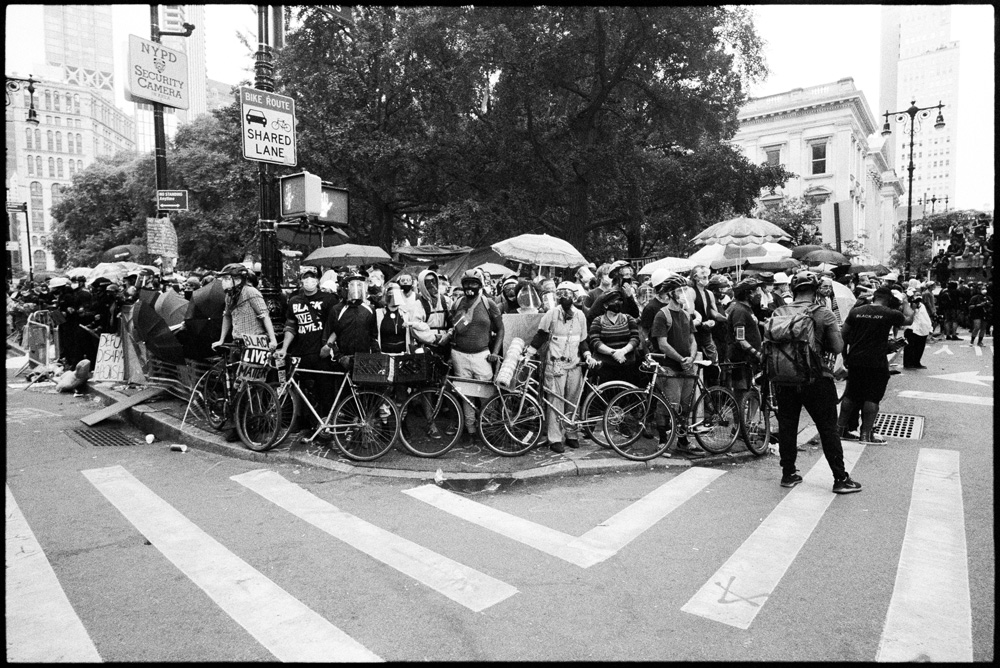
Everyone felt like at any point the police could teargas the entire place and raze the village to the ground, the food, water, clothing, supplies, art, and everything that the community had come together to build.
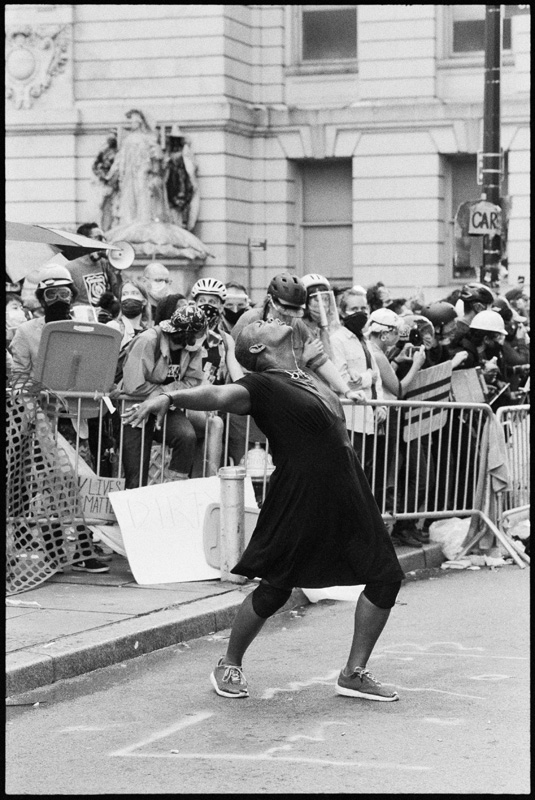
A protester broke out into performance between the police line and the occupation line, presumably to demonstrate how absurd it was to have riot police showing up where there was not a riot.
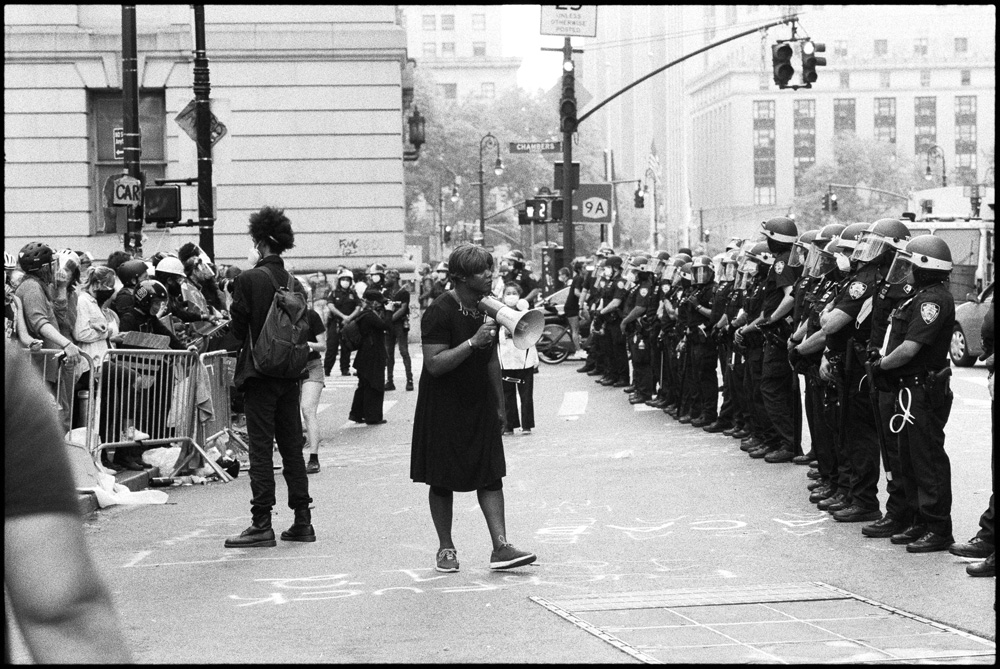
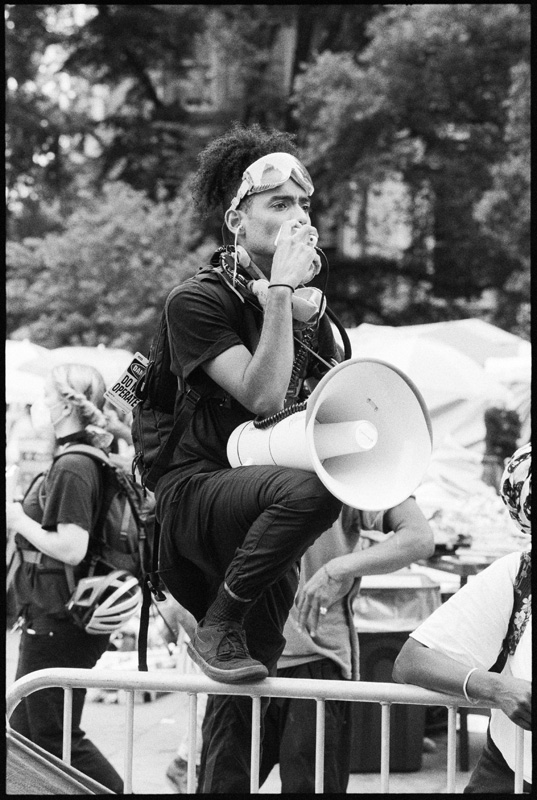
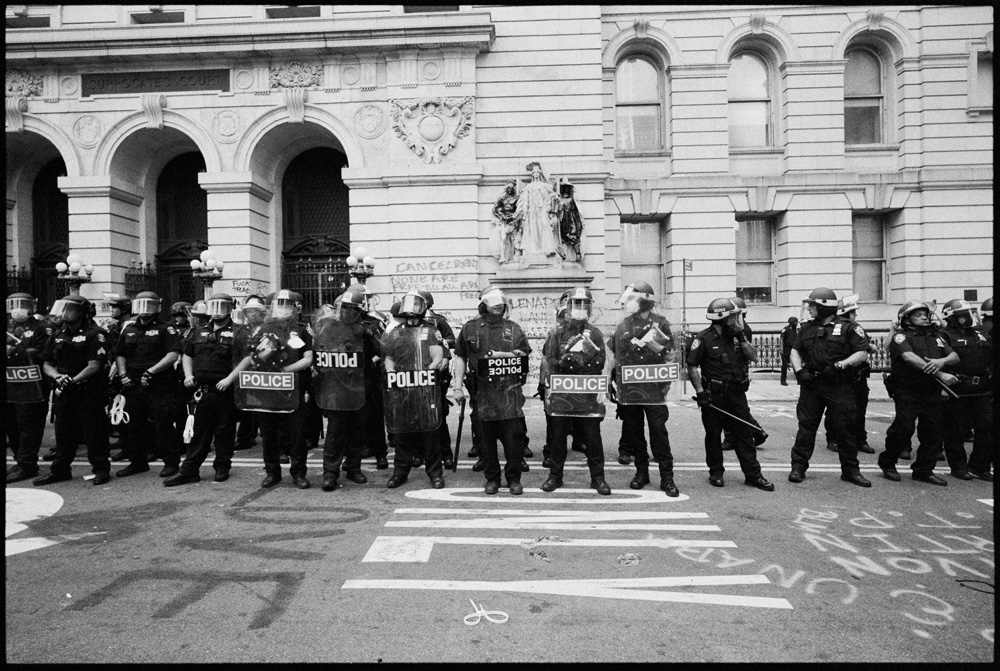
This photo is very similar to one above, they were taken a day apart, police lined up to attack multiple times.
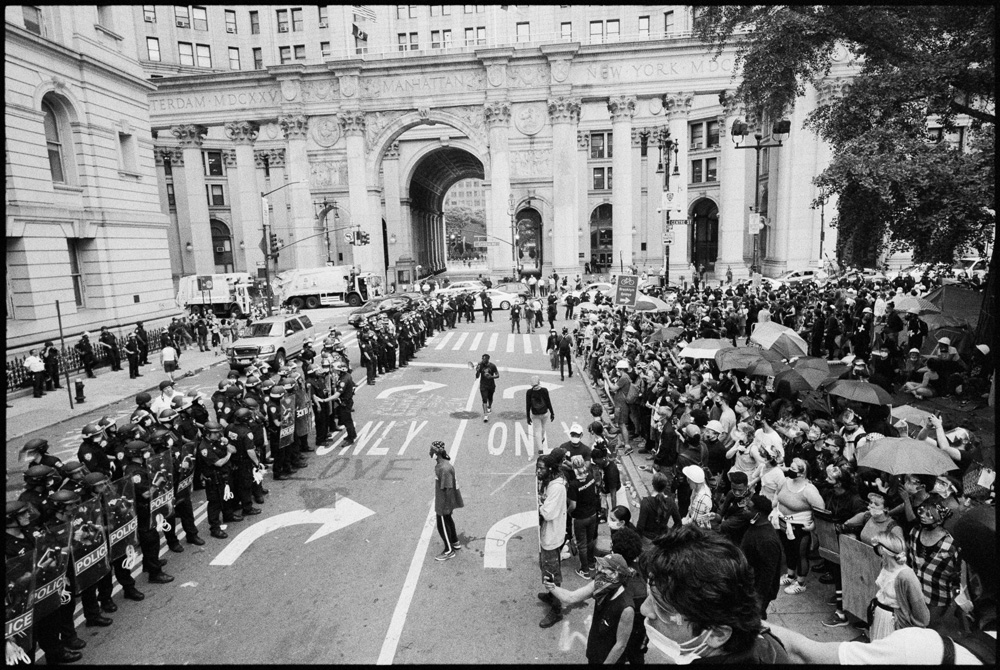
This was the scene right before they finally attacked, which again I did not photograph.
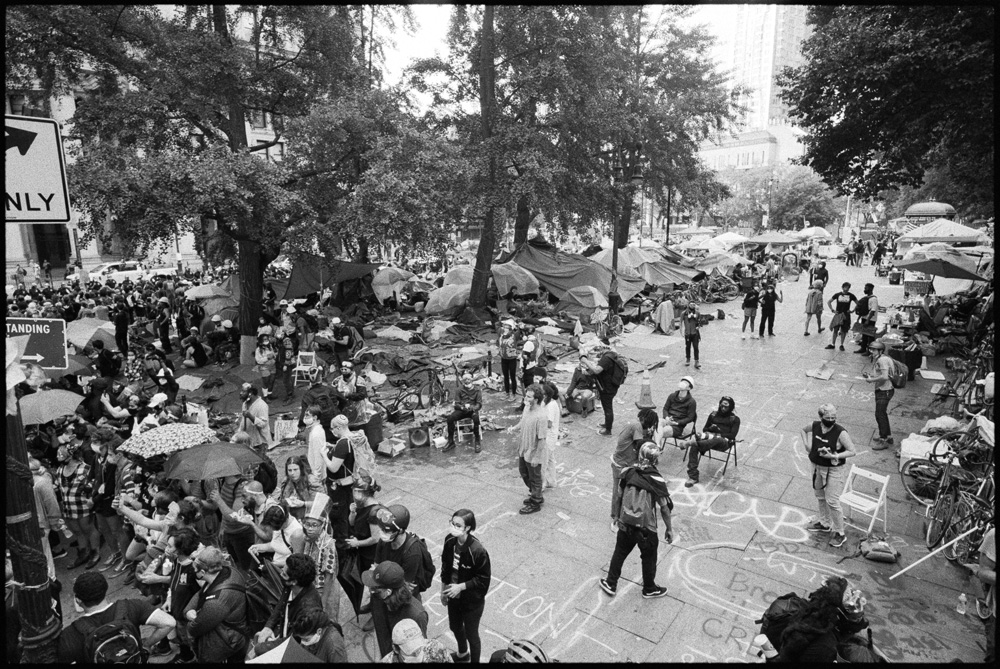
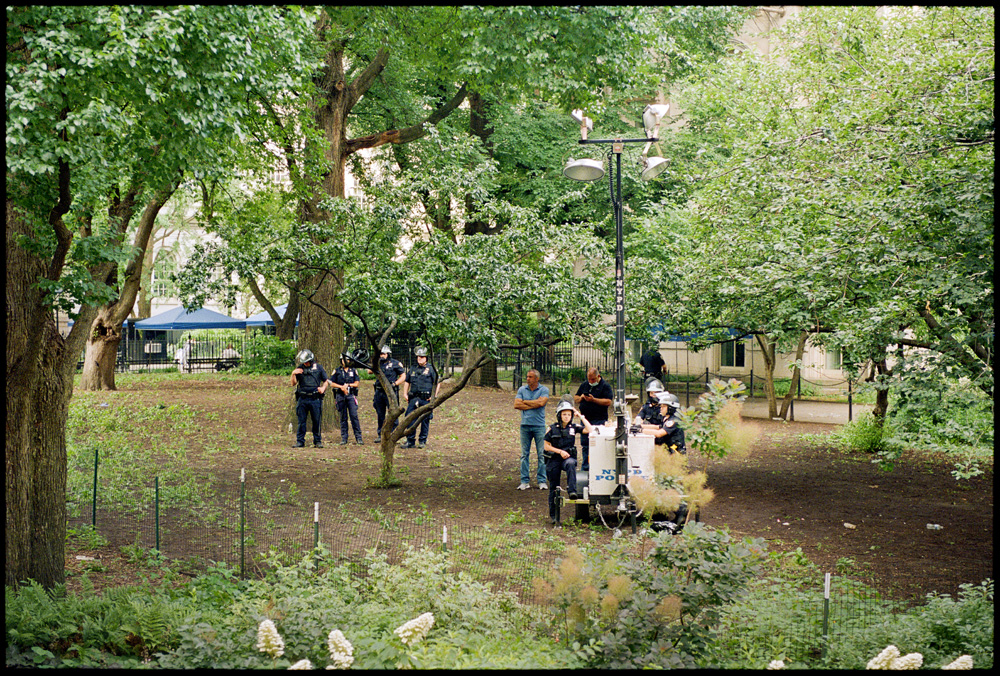
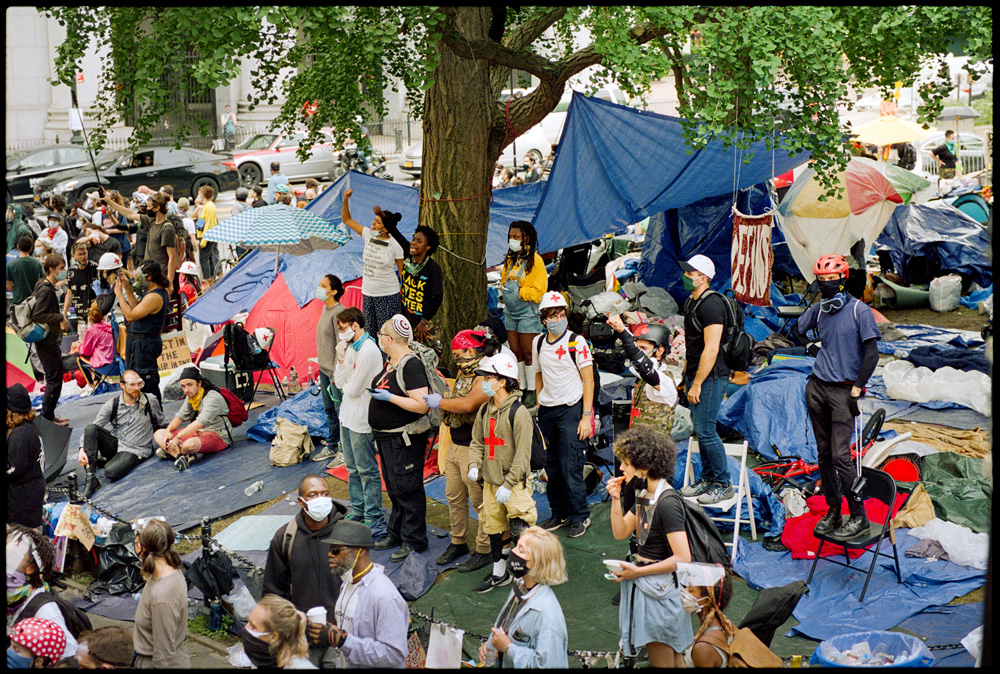
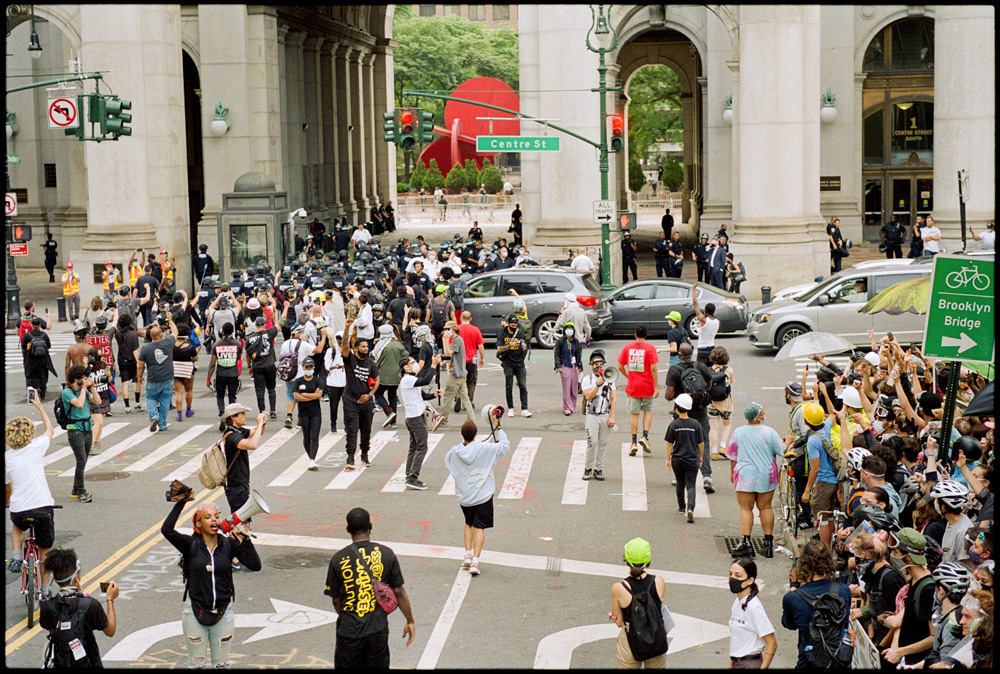
Each time the police attacked, they managed to snatch a few protestors, barriers, and make some other small gains, before retreating. At times it felt like they city wanted to evict the entire park at once, but other times it seemed like they couldn’t do it right away, and strategically attacked multiple times on various mornings as part of a strategy to weaken the community. Nonetheless protesters would celebrate pushing back against each attack.
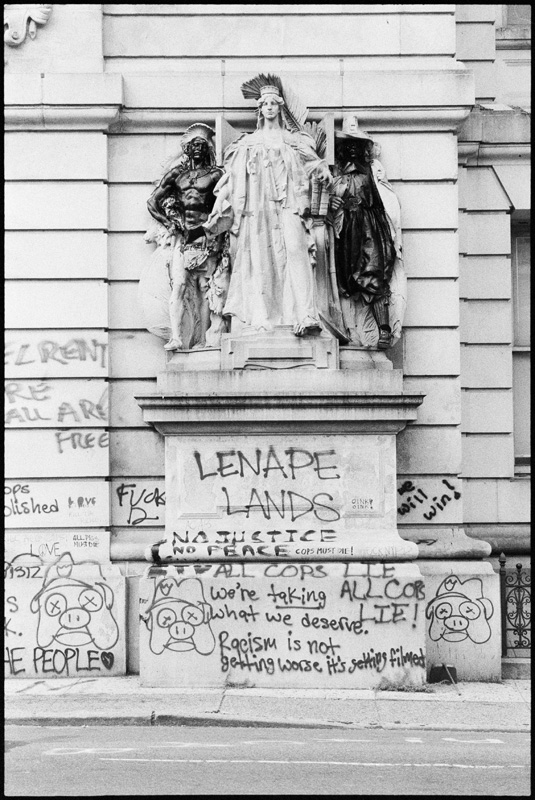
After the City Council vote, and various attacks, there were mixed opinions on whether or not to end the occupation. On one hand the budget vote was the primary focus of this occupation, and moving out gracefully would be able to salvage all the supplies brought in, the clothes, tables, food, water, coolers, medic and charging equipment etc, to make use of in future endeavors, instead of being eventually evicted and have everything trashed, as what happened at Occupy Wall Street nearly a decade earlier. On the other hand, the community was a great resource, and provided so many resources, and people fought so hard to sustain and preserve it. It was honestly one of the most impressive things I’ve witnessed, people coming together with such dedication, working tirelessly, all day and night, to push for change, to save lives and keep people safe. You could really see the organizers, speakers, and activists putting in a lifetime of work over the course of a couple weeks.
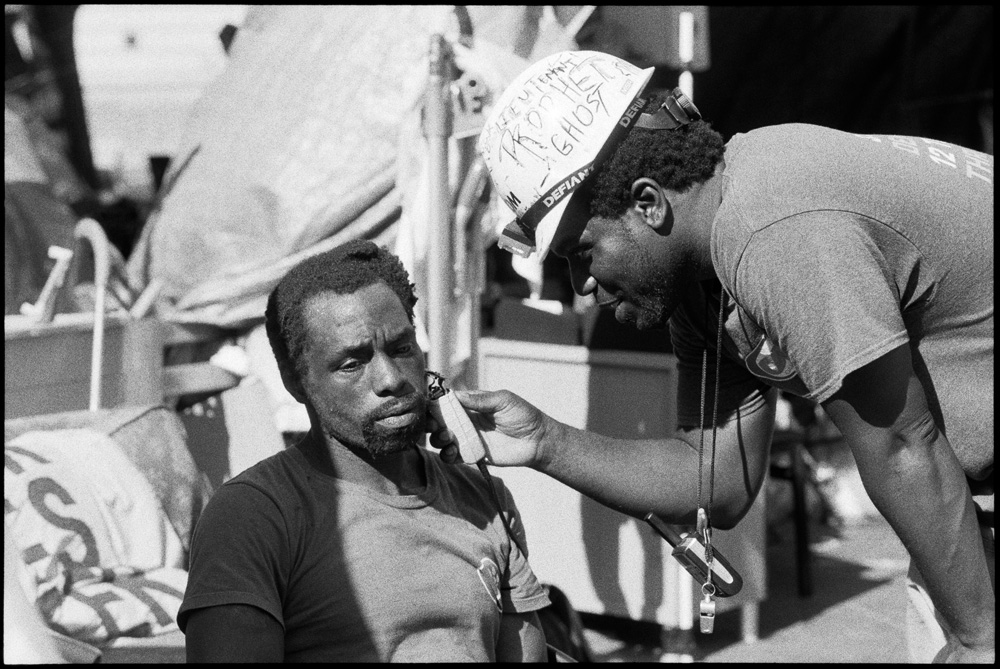
In the end, while the occupation was a community organized space, it was also autonomous, and individuals did what they felt was best, some redirected their energy to other efforts, some stayed longer to continue providing to the community. Eventually the police did come in and raze everything that was left. It was never intended to be a permanent occupation, and the movement for Black liberation carried on from there, taking various shapes, methods, and tactics, and continues on today.
This concludes Part 2, thanks for reading. It’s impossible to depict everything that was happening, but I hope this series of photos and captions helps give a glimpse of what Occupy City Hall was like, and contributes to the records of an invaluable protest and movement.
Visit Part 1 if you haven’t already.
–
